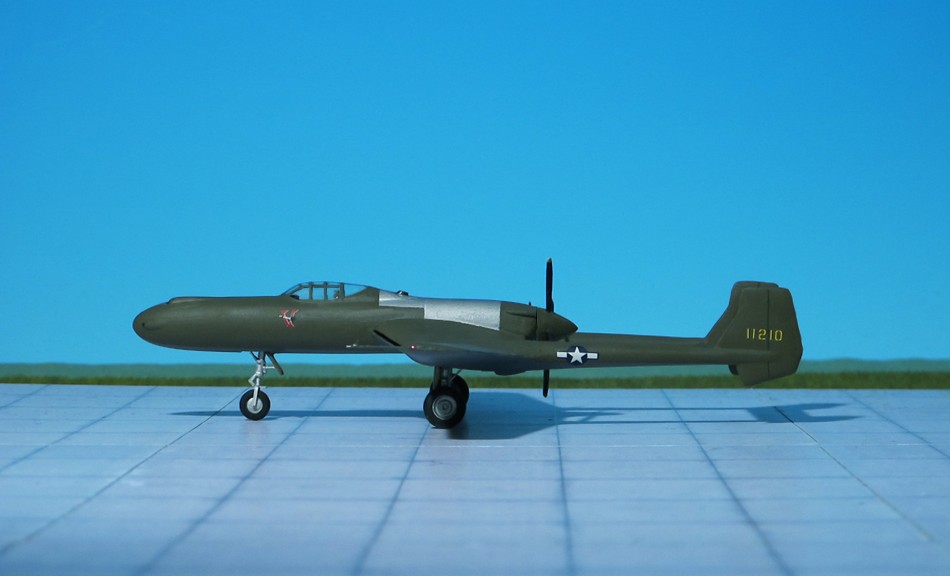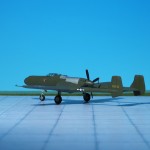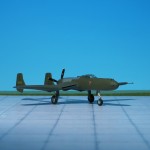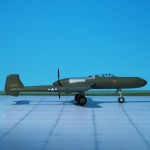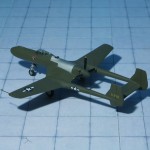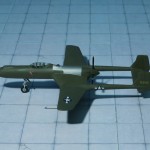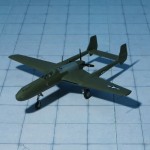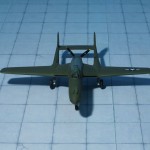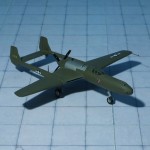TYPE: Long-range fighter
ACCOMMODATION: Pilot only
POWER PLANT: One Lycoming XH-2470-1 liquid-cooled engine, rated at 2.300 hp
PERFORMANCE: 381 mph at 28,500 ft
COMMENT: The Vultee XP-54 had its origin in the US Army Air Corps Circular Proposal R-40C, which invited manufacturers to submit designs for fighters of high prospective performance, without the customary limitations on design orthodoxy. Besides Curtiss (XP-55 Ascender), Northrop (XP-56 Black Bullet), and McDonald (XP-67 Moon Bat) Vultee Field Division of Consolidated Vultee Aircraft Co submitted its design Model 78. This aircraft was powered by an Allison V-1710 (without supercharger) or Pratt & Whitney X-1800 engine driving a pusher propeller, and with a twin-boon layout. A unique feature was that the whole nose section could be varied in elevation to permit compensation for range of the guns it contained. Movement of this nose section was linked to a special compensating gun sight. A contract for the Vultee design, officially XP-54, was placed on June 1940 and the order for a prototype was given at the end of that year, followed by an order for a second prototype on March 1942. The supercharged Lycoming H-2470 engine was chosen to replace the X-1800 when the latter was discontinued. Work on the XP-54 made slow progress during 1942 and the first prototype did not fly until January 1943. It quickly became apparent that the top speed was as much as 100 mph below estimate, partly because the Lycoming engine was not performing as planned. Although substitution of Allison V-3420 was considered as an alternative for the XP-54, this effectively brought the Vultee fighter program to an end (Ref.: 9).
